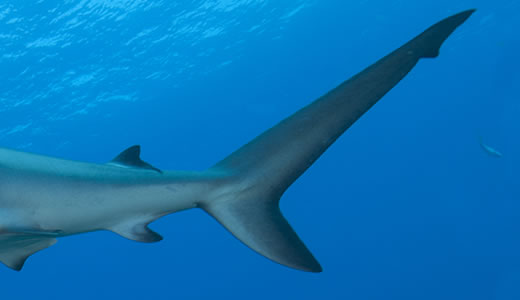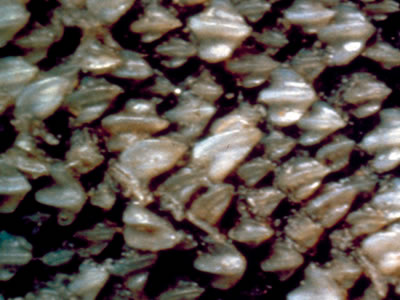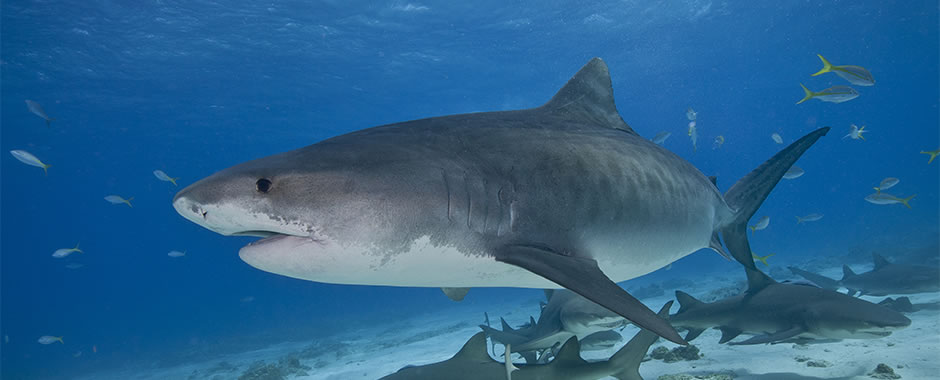Hydrodynamics
Body shape
Sharks typically have an elongate fusiform body (rounded and tapering at both ends). This body shape reduces drag and requires a minimum of energy to swim. Swimming is essential for buoyancy.

Caudal fin
Unlike most bony fishes, the upper lobe of a shark's caudal fin is larger than the lower lobe. As the caudal fin moves back and forth to propel the shark forward, it also moves upward. As the caudal fin continues to lift, the shark's head points down. The overall effect of the motion of the caudal fin results in a forward and downward motion.

The upper lobe of a shark's caudal fin (tail) is larger than the lower lobe.
Pectoral fins
The pectoral fins compensate for this downward motion. One function of the rigid pectoral fins is to provide lift in the forward region of the shark's body. This counteracts the overall downward force caused by the caudal fin and results in horizontal passage through the water.

Horizontal keel
The horizontal keel on the caudal peduncle of some sharks is an adaptation for fast swimming. It reduces turbulence.

Placoid scales
As a shark or batoid swims, placoid scales may create a series of vortices or whirlpools behind each scale. This enables a shark to swim efficiently.


Magnified ray placoid scales (Left) and magnified shark placoid scales (Right).
Swimming speed
Generally sharks swim at speeds less than 5 kph (about 3 mph). For the most part, bottom-dwelling sharks are slow-swimming. Makos are among the fastest sharks, reaching speeds up to 48 kph (30 mph).




